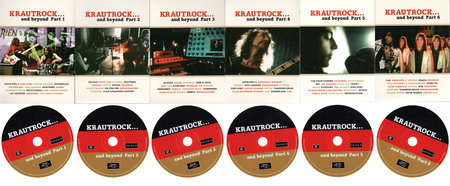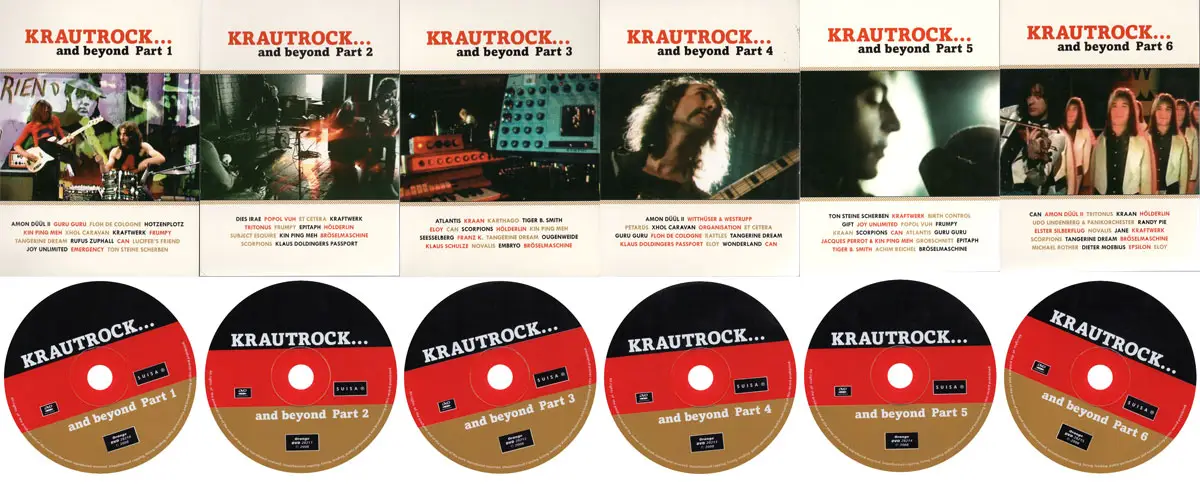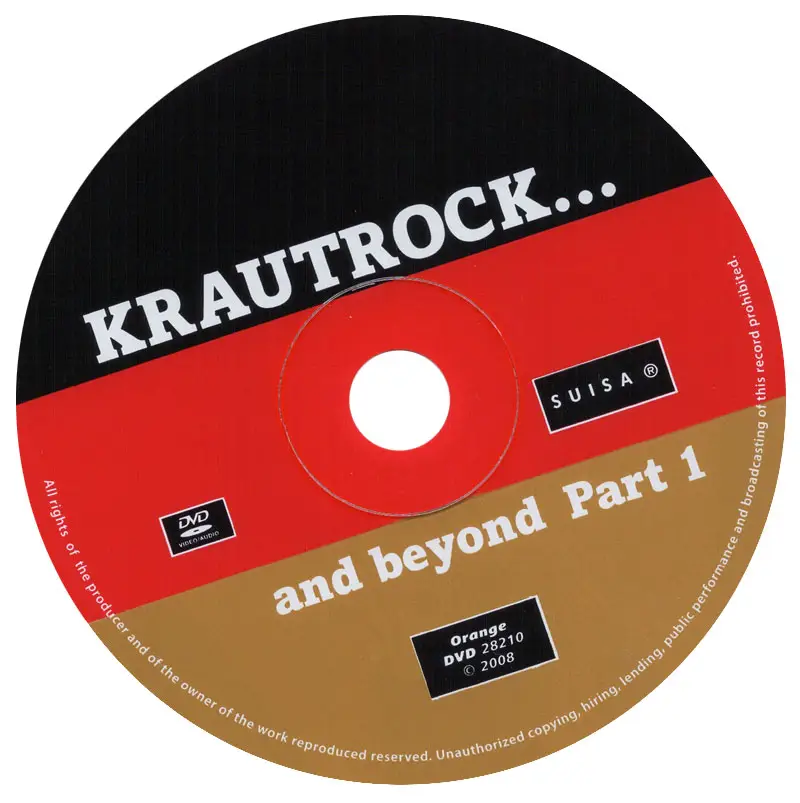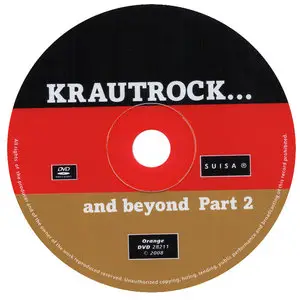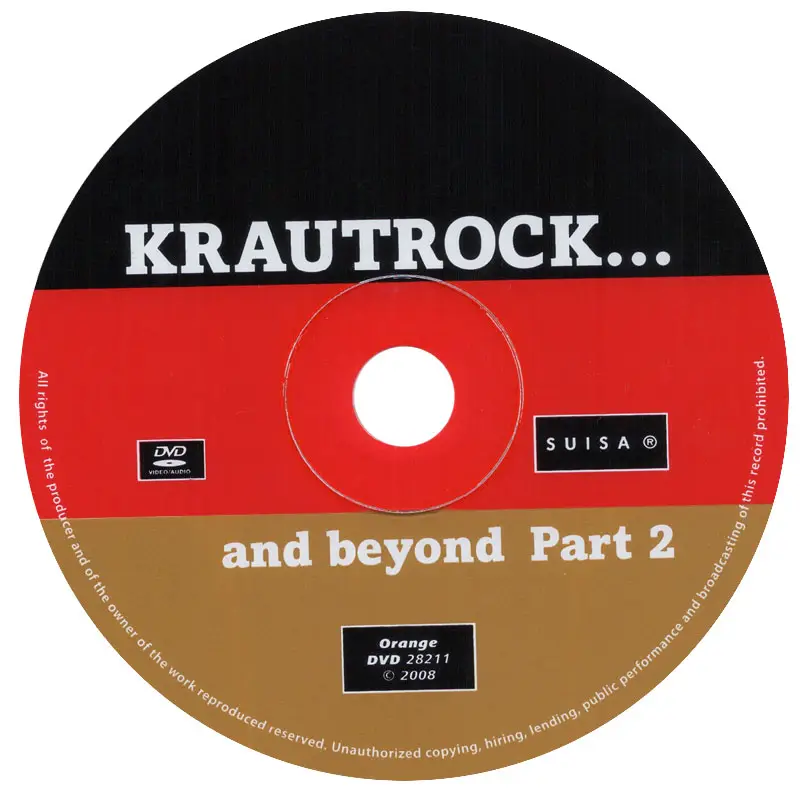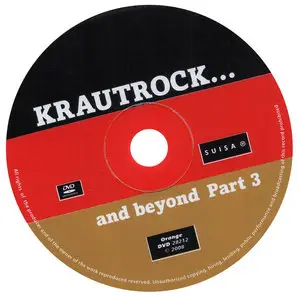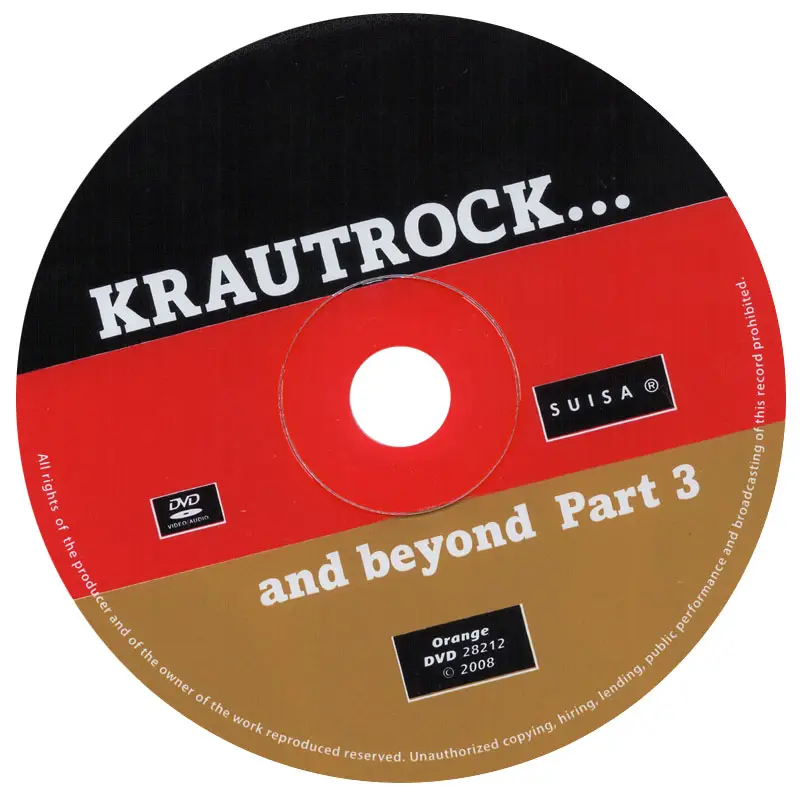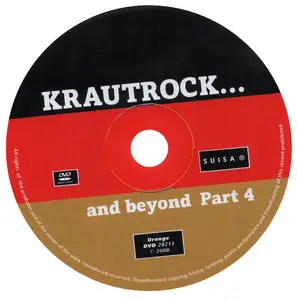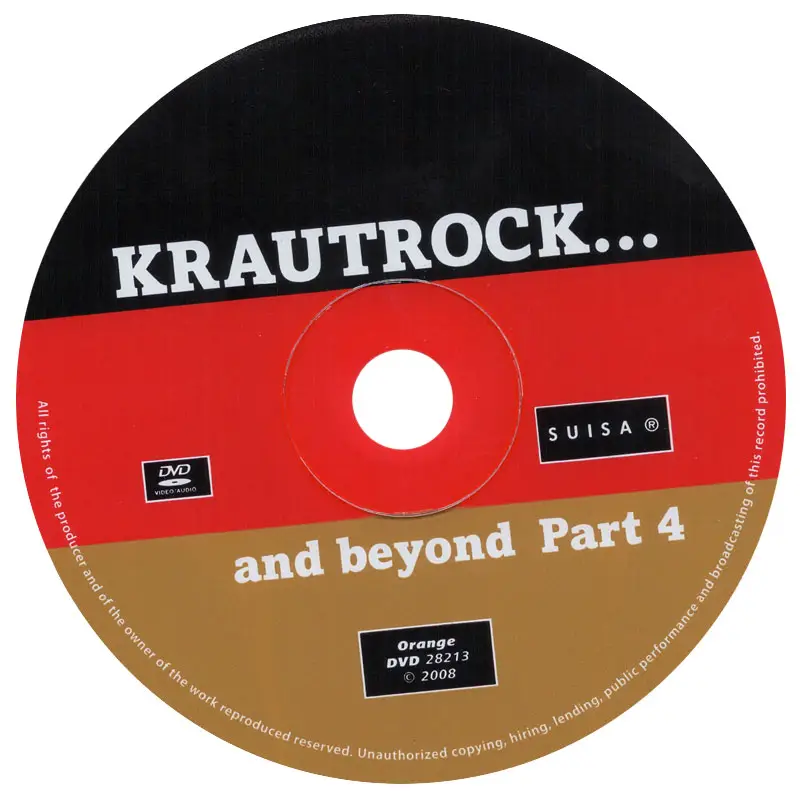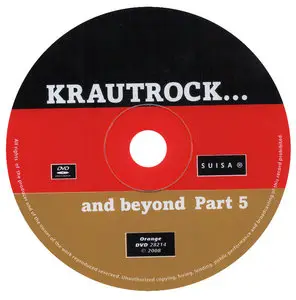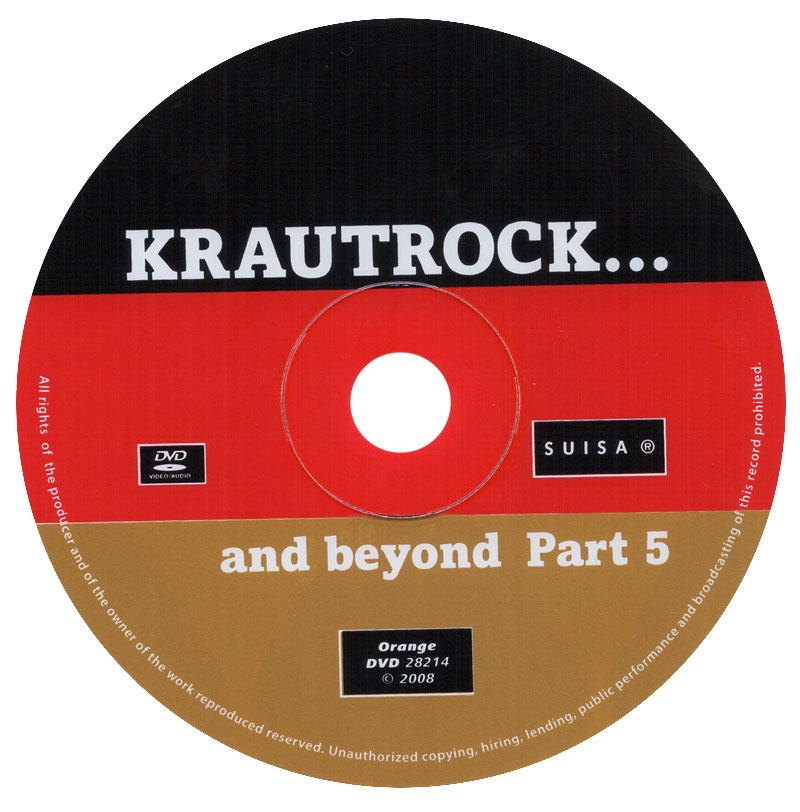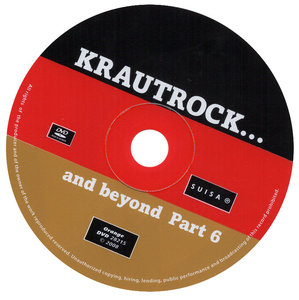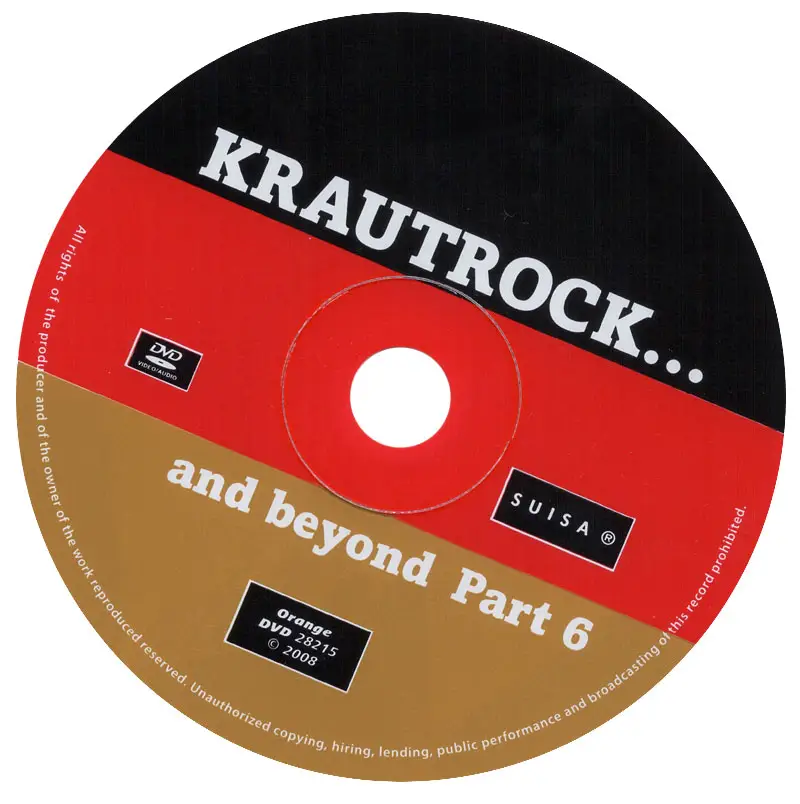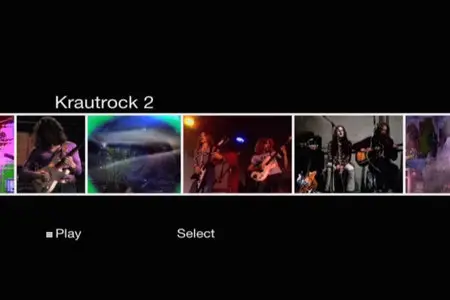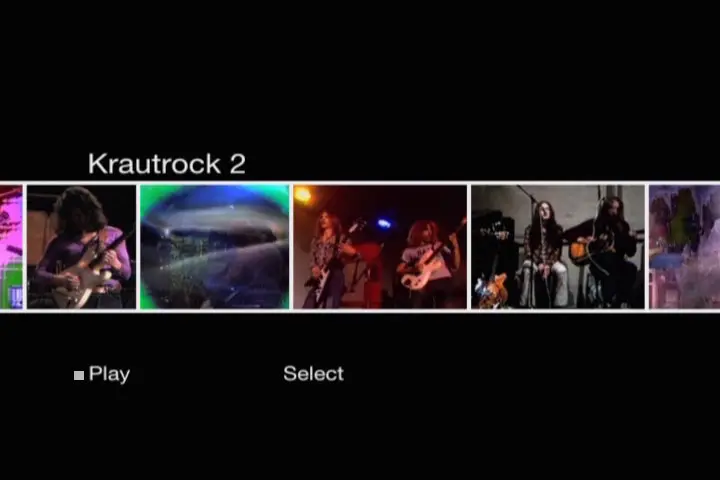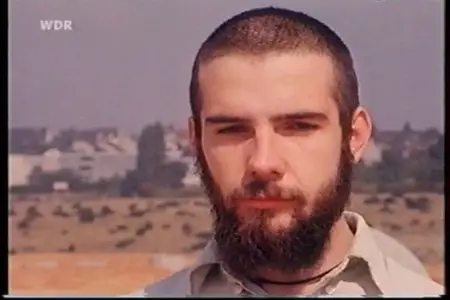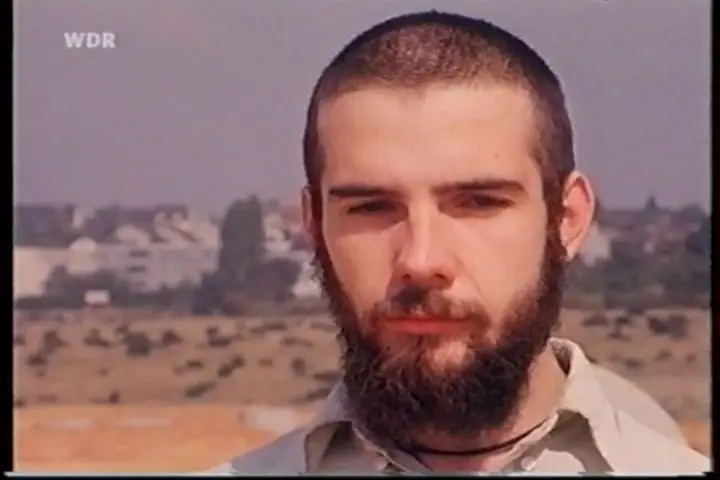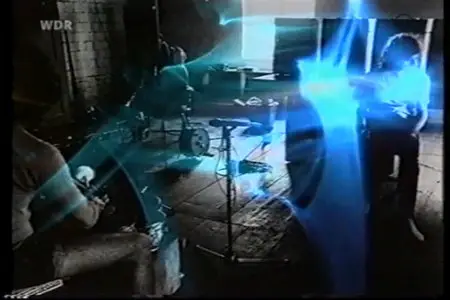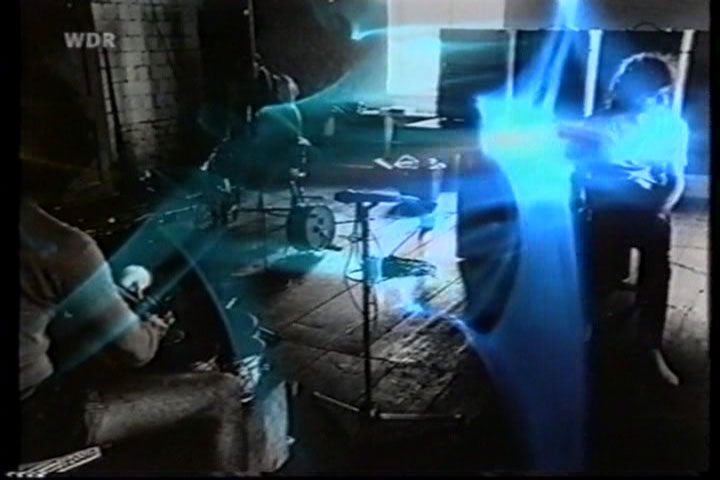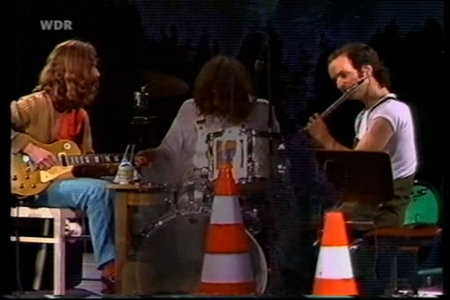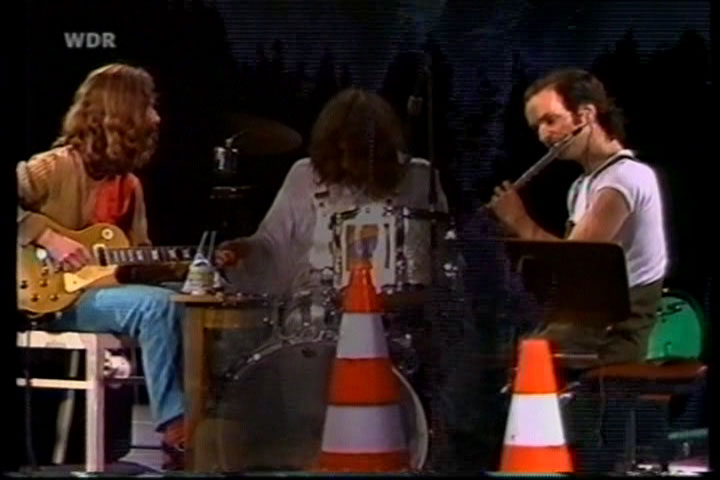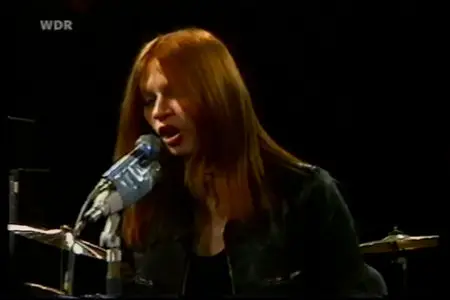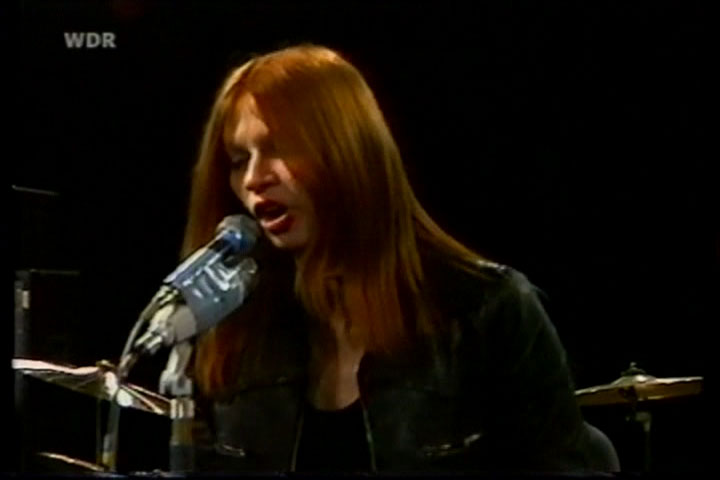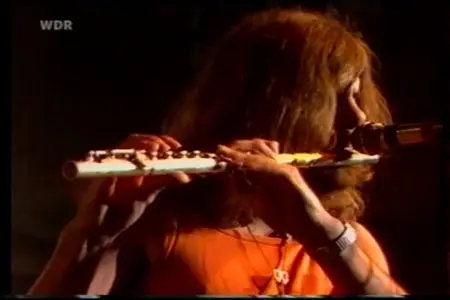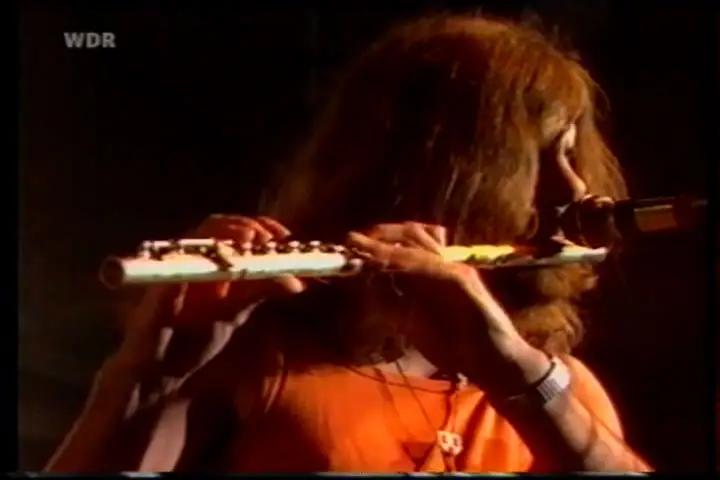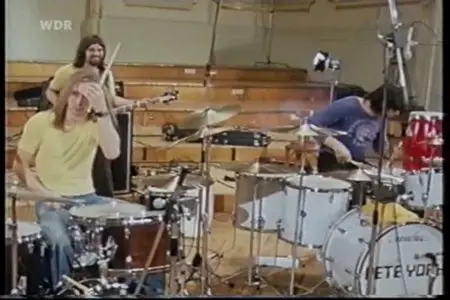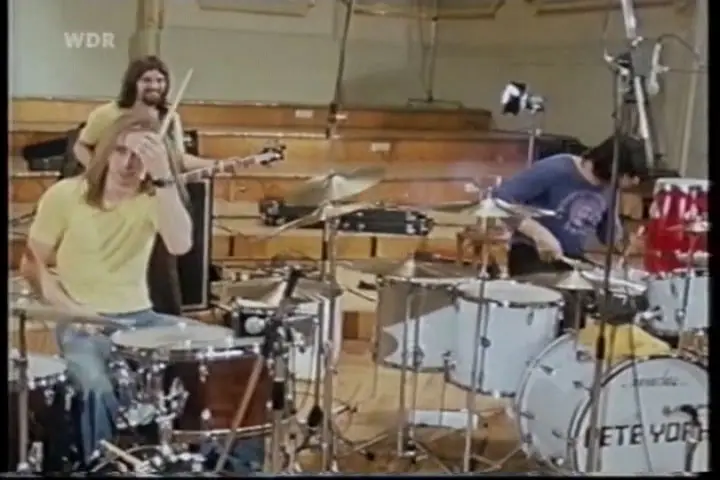KRAUTROCK… and beyond. Parts 1 - 6 (2008)
Prog / Fusion / Psychedelic / Krautrock | Orange DVD 28210~15
6 x DVD-5: NTSC 720x480 (4:3), VBR | LPCM, 2ch, 1536 Kbps -> 24.77 Gb
Scans (Jpg, 300dpi) Included
~ 11 hours of krautrock, progressive and phychedelic rock early of 70s. Music what decide next progress all progressive rock music. ~
Prog / Fusion / Psychedelic / Krautrock | Orange DVD 28210~15
6 x DVD-5: NTSC 720x480 (4:3), VBR | LPCM, 2ch, 1536 Kbps -> 24.77 Gb
Scans (Jpg, 300dpi) Included
~ 11 hours of krautrock, progressive and phychedelic rock early of 70s. Music what decide next progress all progressive rock music. ~
Krautrock definition
Krautrock (also called "Kosmische musik") is a German avant-garde / experimental rock movement that emerged at the end of the 1960's. It was intended to go beyond the eccentricities developed by the wild psychedelic rock universe of the US, by giving a special emphasis to electronic treatments, sound manipulation and minimal hypnotic motifs (continuing the style of "musique concrete" and minimalist repetitive music but within a more accessible environment).
Krautrock put the emphasis on extended and ecstatic instrumental epics, neglecting the format of conventional psych-pop songs. The term Krautrock was first used by the British music press in a very derogatory way. The term rapidly found a better reputation in underground music circles and finally gained a certain popularity (thanks to the Brain-Festival Essen…)
The Krautrock movement is widely associated with notorious bands such as Popol Vuh, Amon Duul, Faust, Neu!, Ash Ra Tempel, Agitation Free, Guru Guru, etc. With their own particular artistic expression, these musical collectives provided rocking psychedelic incantations, mantra like drones, melancholic lugubrious atmospheres, long and convoluted collective improvisations, binary repetitive drum pulses, fuzz guitars, feedback, primitive electronic noises, hallucinatory ballads, and garage blues rock trips. Krautrock can be described as an anarchic, intense, acid, tellurian, nocturnal, spacey, dark and oniric "adventure" through rock music.
The most consistent years of the Krautrock scene cover a relatively short period from 1970 to 1975. After their first spontaneous, hyperactive and psychedelic efforts, the bands generally split up or declined into other musical sensibilities, more in line with mainstream rock or with ambient soundscapes.
Each region develops its particular musical scene, interpreting differently the Krautrock musical structure. For instance the Berlin school focused on "astral" synthscapes, weird electronic experimentation and acid jams (Ash Ra Tempel, Agitation Free, Mythos, The Cosmic Jokers, Kluster…), The Munich scene offered fuzzed out (Eastern) psych rock mantras with some folk accents (Popol Vuh, Amon Duul, Gila, Guru Guru, Witthuser & Westrupp…). Cologne and Dusseldorf underground scenes focused on happenings, political rock, electronics, pulsating rhythms and clean sounding Krautrock (Floh de Cologne, La Dusseldorf, Neu! Can…).
This musical cartography is correct in the absolute but naturally reveals some variations and exceptions. This intriguing and freak 'n' roll 1970's German scene enjoyed a rebirth in recent years thanks to a large number of reissues (of long lost classics) published by several independent labels (Spalax, Garden of Delights, Long Hair Music…) as a direct result of Krautrock's musical inspiration of modern post rock bands. There are actually some neo psychedelic rock bands who try to hold up Krautrock, and who notably find a major place to express themselves during the historical Burg Herzberg Festival in Germany.by Philippe Blache, Progarchives
Krautrock is a generic name for the experimental music scenes that appeared in Germany in the late 1960s and gained popularity throughout the 1970s, especially in Britain. The term is a result of the English-speaking world's reception of the music at the time and not a reference to any one particular scene, style, or movement, as many krautrock artists were not familiar with one another. BBC DJ John Peel in particular is largely credited with spreading the reputation of krautrock outside of the German-speaking world.
Largely divorced from the traditional blues and rock & roll influences of English and American rock music up to that time, the period contributed to the birth and evolution of electronic music, ambient music, alternative music and New Age music. Key artists associated with the tag include Can, Amon Düül II, Birth Control, Ash Ra Tempel, Faust, Popol Vuh, Cluster, Tangerine Dream, Klaus Schulze, Neu!, and Kraftwerk.
Origin of the term
The moniker "krautrock" was slapped on the experimental German rock movement of the late 1960s and early 1970s by the British music press, and ironically retained by its practitioners The term krautrock was originally a humorous one coined by the UK music press (such as New Musical Express and Melody Maker), where "krautrock" found an early and enthusiastic underground following. The term derives from the ethnic slur "kraut", and its use by the music press was inspired by a track from Amon Düül's Psychedelic Underground titled "Mama Düül und Ihre Sauerkrautband Spielt Auf" ('Mama Düül and her Sauerkrautband Strike Up.') As is often the case with musical genre labels, few of the bands wished to see themselves pigeon-holed, and tended to eschew the term. The term is also a problematic category due to the considerable differences between the artists so labelled.
Musicologist Julian Cope, in his book Krautrocksampler, says "Krautrock is a subjective British phenomenon," based on the way the music was received in the UK rather than on the actual West German music scene out of which it grew. For instance, while one of the main groups originally tagged as krautrock, Faust, recorded a seminal 12 minute track they titled "Krautrock", they would later distance themselves from the term, saying: "When the English people started talking about Krautrock, we thought they were just taking the piss… and when you hear the so-called 'Krautrock renaissance,' it makes me think everything we did was for nothing."
Characteristics
Krautrock is an eclectic and often very original mix of post-psychedelic jamming and moody progressive rock mixed with ideas from contemporary experimental classical music (especially composer Karlheinz Stockhausen, with whom, for example, Irmin Schmidt and Holger Czukay of Can had previously studied) and from the new experimental directions that emerged in jazz during the 1960s and 1970s (mainly the free jazz pieces by Ornette Coleman or Albert Ayler). Moving away from the patterns of song structure and melody of much rock music in America and Britain, some in the movement also drove the music to a more mechanical and electronic sound. The key component characterizing the groups gathered under the term is the synthesis of rock and roll rhythm and energy with a decided will to distance themselves from specifically American blues origins, but to draw on German or other sources instead. Jean-Hervé Peron of Faust says: "We were trying to put aside everything we had heard in rock 'n' roll, the three-chord pattern, the lyrics. We had the urge of saying something completely different."
Typical bands dubbed "krautrock" in the 1970s included Tangerine Dream, Faust, Can, Amon Düül II, Ash Ra Tempel and others associated with the celebrated Cologne-based producers and engineers Dieter Dierks and Conny Plank, such as Neu!, Kraftwerk and Cluster. Bands such as these were reacting against the post-WWII cultural vacuum in Germany and tending to reject Anglo-American popular culture in favour of creating their own more radical and experimental new German culture and identity, and to develop a radically new musical aesthetic. Many of these groups began their musical careers with little or no awareness of (or interest in) rock and roll: exposure to the increasingly radical and innovative music of the Velvet Underground, Pink Floyd, Frank Zappa, Jimi Hendrix and the Beatles, for example, led members of groups like Can and Kraftwerk to embrace popular music for the first time.
The signature sound of krautrock mixed rock music and "rock band" instrumentation (guitar, bass, drums) with electronic instrumentation and textures, often with what would now be described as an ambient music sensibility. A common rhythm featured in the music was a steady 4/4 beat, often called "motorik" in the anglophone music press.
History
By the end of the 1960s, the American and British counterculture and hippie movement had moved rock towards psychedelia, heavy metal, progressive rock and other styles, incorporating, for the first time in popular music, socially and politically incisive lyrics. The 1968 German student movement, French protests and Italian student movement had created a class of young, intellectual continental listeners, while nuclear weapons, pollution, and war inspired protests and activism. Avant-garde music had taken a turn towards the electronic in the mid-1950s. The avant-garde minimalist music current which emerged in the beginning of the 60s with the works of Americans La Monte Young, Terry Riley and Steve Reich using drones and loops (often with synthesizers and tapes) in a kind of psychedelic and space-oriented music.
These factors all laid the scene for the explosion in what came to be termed krautrock, which arose at the first major German rock festival in 1968 in Essen. Like their American, British and international counterparts, German rock musicians played a kind of psychedelic music. In contrast, however, there was no attempt to reproduce the effects of drugs, but rather an innovative fusion of jazz, free-jazz and the electronic avant-garde, and strikingly innovative as a fusion of psychedelia and the electronic avant-garde. That same year, 1968, saw the foundation of the Zodiak Free Arts Lab in Berlin by Hans-Joachim Roedelius, and Conrad Schnitzler, which further popularized the psychedelic-rock sound in the German mainstream. Originally krautrock was a form of Free art, which meant that krautrock bands gave their records away for free at Free Art Fairs.
The next few years saw a wave of pioneering groups. In 1968, Can formed by two former students of Karlheinz Stockhausen, adding jazz to the mix (and in that way the krautrock scene can be seen to parallel the emerging Canterbury scene in England at the same time), while the following year saw Kluster (later Cluster) begin recording keyboard-based electronic instrumental music with an emphasis on static drones. In 1970, Popol Vuh became the first krautrock group to use an electronic synthesizer, to create what would be known as "kosmische musik". By 1971, the bands Tangerine Dream and Faust began to use electronic synthesizers and advanced production. The term Kosmische musik dates from that period. The bands Tangerine Dream, Ash Ra Tempel, Sand (Golem album) and Cosmic Jokers (all linked by collaboration with Klaus Schulze), would follow suit in the years to come. Faust also made use of synthesizers and tape manipulation in a way foreshadowing the noise rock of the future.
In 1972, two albums incorporated European rock and electronic psychedelia with Asian sounds: Popol Vuh's In den Gärten Pharaos and Deuter's Aum. Meanwhile, kosmische musik saw the release of two double albums, Klaus Schulze's Cyborg and Tangerine Dream's Zeit (produced by Dieter Dierks), while a band called Neu! began to play highly rhythmic music. By the middle of the decade, one of the best-known German bands, Kraftwerk, had released albums like Autobahn and Radioaktivität ("Radio-Activity" in English), which laid the foundation for the British 1980s synthpop/new wave music, electro, techno and other styles later in the century.
The release of Tangerine Dream's Phaedra in 1974 marked a divergence of that group from krautrock to a more melodic sequencer-driven sound that was later termed Berlin School. In that same year Klaus Schulze delivered one more LP of pure krautrock, Blackdance, and then began to release a more expansive version of the kind of music that TD was making.
By the mid-late 1970s onward the terms electronic rock, electronic music, new instrumental music and new age have been used more often than Krautrock and Kosmische Musik, though the early scene continues still today to be regarded as a style in and of itself.
East Germany
By the early 1970s experimental West German rock styles had crossed the border into East Germany, and influenced the creation of an East German rock movement referred to as Ostrock. On the other side of the Wall, these bands tended to be stylistically more conservative than in the West, to have more reserved engineering, and often to include more classical and traditional structures (such as those developed by Kurt Weill and Bertolt Brecht in their 1920s Berlin theatre songs). These groups sang in German, often featuring poetic lyrics loaded with indirect double-meanings and deeply philosophical challenges to the status quo. The best-known bands representing these styles in the GDR were The Puhdys and Karat. Krautrock must generally be regarded, however, as a primarily West German phenomenon; the East German musical avant-garde may be argued to have been more genuinely represented by, for example, political singer-songwriter Wolf Biermann, whose work more aptly bears comparison to Woody Guthrie or early Bob Dylan than to any progressive rock artists.
Influence on later generations
Krautrock was highly influential on the development of post-punk, notably artists such as The Fall, Joy Division, and This Heat. The genre was also a strong influence to David Bowie's Station to Station (1976) and this kind of experimentation led him go to his 'Berlin Trilogy'.[8][9] By the late 1990s and early 2000s, with the resurgence of electronic music and a new generation rediscovering much of the early German music, krautrock came to be considered a style in and of itself. Artists such as Stereolab, John Frusciante, The Mars Volta, Deerhunter, Wilco, Laika, Mouse on Mars, Bowery Electric, I Am Spoonbender, Tortoise, Coil, and Fujiya & Miyagi working under the post-rock and electronica rubrics have often cited bands in the krautrock canon as being among their more significant influences.
Krautrock has also been an influence on Hawkwind, in particular Dave Brock who supposedly penned the sleeve notes for the British edition of Neu!'s first album
Radiohead has covered Can's song "Thief" and cite Can, Faust, and Neu! among their influences, while The Secret Machines not only covered Harmonia's "(De Luxe) Immer Wieder" on their The Road Leads Where It's Led EP, but have also played live with Michael Rother. Porcupine Tree has also covered Neu!'s "Hallogallo" as a demo for their album Signify. The band Wilco has shown a growing krautrock influence in their music, specifically on Yankee Hotel Foxtrot and several songs on A Ghost Is Born, especially "Spiders (Kidsmoke)." In interviews Jeff Tweedy has often spoken of his admiration for Can and Neu!. Current 93 covered Sand's "When the May Rain Comes" on their album Thunder Perfect Mind. Julian Cope has always cited krautrock as an influence, and wrote the book Krautrocksampler on the subject. The Kosmische Club was founded in London at his suggestion in 1996, with the motto "Music from the Future", and did much to promote the genre on the underground music scene, including promoting gigs featuring many of the original German musicians and through a weekly radio show on Resonance FM since 2002.
The Legendary Pink Dots claim heavy influence from krautrock—naming in particular Can, Faust and Neu!—with one of their few cover songs being Neu!'s "Super" on the Cleopatra Records album A Homage to NEU!, which featured covers and remixes by bands including Autechre, Dead Voices On Air, Khan, System 7, James Plotkin, as well as an original track from Michael Rother.
~wiki
Краут-рок (нем. Krautrock) — направление экспериментальной и психоделической рок-музыки, возникшее в конце 1960-х — начале 1970-х годов в Германии.
Музыка
Визитной карточкой стиля стало смешение рок-музыки, исполняемой на стандартных инструментах рок-группы (электрогитара, бас-гитара, ударные) со структурами электронной музыки, а также электронной обработкой звука. Среди прочего, в музыке нередко присутствует пульсирующий ритм, т.н. моторик (нем. Motorik), яркими примерами которого являются композиция Autobahn группы Kraftwerk и альбомы группы Neu!. Таким образом, краут-рок дал импульс для развития электронной музыки и эмбиента. Помимо этого, в краут-роке делается упор на инструментальную музыку, импровизации и экспериментализм. Корни краут-рока уходят частично в немецкий электронный авангард 1950-х годов и творчество композитора Карлхайнца Штокхаузена (у которого учился музыке Holger Czukay из группы Can).
Происхождение
Многие из групп краут-рока пытались заполнить культурный вакуум, образовавшийся в Германии после Второй мировой войны, и создать на основе англо-американской поп- и рок-культуры свою собственную, более радикальную и экспериментальную, новую немецкую культуру. В то же время, под влиянием политической и социальной обстановки в мире, в других странах возникли также такие не чуждые краут-року явления, как психоделическая музыка и культура хиппи.
Типичными представителями краут-рока являются немецкие группы начала 1970-х годов: Tangerine Dream, Faust, Can, Neu!, Organisation, и многие другие.
Важную роль в развитии стиля сыграли кёльнские продюсеры Дитер Диркс (нем. Dieter Dierks) и Конни Планк (нем. Conny Plank).
Влияние краут-рока
В эпоху построка и очередной волны повышенного интереса к электронной музыке в конце 1990-х — начале 2000-х годов, обнаружилось, что немецкий краут-рок оказал большое влияние на музыкантов нового поколения. Такие группы, как Radiohead, Stereolab, Laika, Boredoms, Mouse on Mars и Tortoise называют краут-рок-группы в числе наиболее повлиявших на них.
Группы Can и Neu! считаются одними из самых значительных групп в истории альтернативной музыки — среди их почитателей Sonic Youth, Einstürzende Neubauten, Red Hot Chili Peppers и многие другие.
В 2000-х годах композиции краут-рок-групп неожиданно встречаются в разных музыкальных программах, например на концертах Radiohead (исполняли живьём кавер-версию композиции Can «The Thief») или в саундтреке к фильму «Убить Билла» Квентина Тарантино (композиция «Super16» группы Neu!)
Термин
Возможно, что термин «краут-рок» был введён британской прессой, и образован от сленгового слова «краут» (нем. Kraut), означающего «немец» и произошедшего от Зауэркраут (нем. Sauerkraut) — названия национального немецкого блюда из квашеной капусты. Изначально этот термин был для некоторых слегка оскорбительным, но после того, как музыка в стиле краут-рок стала известной и приобрела множество почитателей, этот термин стал носить однозначно позитивный характер.
Слово Kraut в немецком языке также означает «трава». В отличие от русского языка, это слово не является в немецком жаргонным названием марихуаны, которую именуют «Gras».~ wiki
KRAUTROCK… and beyond. Parts 1 - 6 (2008):
Tracklist DVD1:
01. AMON DÜÜL II: Eye-Shaking King (1970)
02. GURU GURU: Der LSD-Marsche (1970)
03. CAN: Deadlock (1970)
04. TON STEINE SCHERBEN: Macht Kaputt, Was Euch Kaputt Macht (1970)
05. JOY UNLIMITED: Oh Darling (1970)
06. KIN PING MEH: Everything's My Way (1970)
07. XHOL CARAVAN: All Green (1970)
08. KRAFTWERK: Ruckzuck (1970)
09. AMON DÜÜL II: Between The Eyes (1970)
10. FRUMPY: Indian Rope Man (1971)
11. TANGERINE DREAM: Ossiach Lake (1971)
12. CAN: Paperhouse (1971)
13. TON STEINE SCHERBEN: Solidartät (1971)
14. RUFUS ZUPHALL: Portland Town (1971)
15. FLOH DE COLOGNE: Wir Stehen Am Rande (1971)
16. LUCIFER'S FRIEND: Ride The Sky (1971)
17. HOTZENPLOTZ: Untitled (1971)
18. AMON DÜÜL II: Kronwinkl 13 (1971)
19. EMERGENCY: Times Passed By (1971)
Tracklist DVD2:
01. DIES IRAE: Trip (1971)
02. POPOL VUH: Bettina (1971)
03. ET CETERA: Jam Session (1971)
04. KRAFTWERK: Ruckstoß-Gondoliere (1971)
05. BRÖSELMASCHINE: Light Flight (1971)
06. FRUMPY: How The Gypsy Was Born (1971)
07. EPITAPH: Early Morning (1971)
08. HÖLDERLIN: Requiem Für Einen Wicht (1971)
09. EPITAPH: Stop, Look & Listen (1972)
10. FRUMPY: Goin' To The Country (1972)
11. SUBJECT ESQUIRE: Grass (1973)
12. POPOL VUH: Kyrie (1973)
13. KIN PING MEH: Sunday Morning Eve (1973)
14. TRITONUS: Untitled (1973)
15. SCORPIONS: This Is My Song (1973)
16. KLAUS DOLDINGER'S PASSPORT: Schirokko (1973)
Tracklist DVD3:
01. ATLANTIS: Days Of Giving (1973)
02. KRAAN: Jerk Of Life (1974)
03. KARTHAGO: Goin' Down (1974)
04. TIGER B. SMITH: We're The Tiger Bunch (1974)
05. SCORPIONS: Speedy's Coming (1974)
06. HÖLDERLIN: Honeypot (1975)
07. KIN PING MEH: Good Time Gracie (1975)
08. SEESELBERG: Synthetic (1975)
09. FRANZ K.: Au Weia, Mensch Meier (1976)
10. TANGERINE DREAM: Barock 3 (1976)
11. OUGENWEIDE: Willkommen (1976)
12. HÖLDERLIN: Circus (1976)
13. KLAUS SCHULZE: For Barry Graves (1976)
14. ELOY: The Sun Song (1977)
15. CAN: Don't Say No (1977)
16. NOVALIS: Sonnenwende (1978)
17. EMBRYO: Try To Do (1978)
18. BRÖSELMASCHINE: Gedanken (2005)
19. TANGERINE DREAM: Jeanne D'Arc [Excerpt] (2005)
Tracklist DVD4:
01. AMON DÜÜL II: Kanaan (1969)
02. WITTHUSER & WESTRUPP: Kinderlied Fur Erwachsene (1969)
03. PETARDS: On The Road With My Bag (1969)
04. WONDERLAND: Love's A Murder (1969)
05. XHOL CARAVAN: Talking To My Soul (1969)
06. AMON DÜÜL II: Soap Shop Rock (1970)
07. ORGANISATION: Ruckzuck (1970)
08. CAN: Mother Sky (1970)
09. PETARDS: Too Many Heavens (1970)
10. AMON DÜÜL II: Eye-Shaking King (1970)
11. XHOL CARAVAN: Oszillogram (1970)
12. TANGERINE DREAM: Ricochet 1 (1971)
13. ET CETERA: Raga Lady/Blue Thursday Morning/Sunrise (1971)
14. GURU GURU: Electric Junk (1971)
15. FLOH DE COLOGNE: Die Luft Gehört Denen, Die Sie Atmen (1971)
16. RATTLES: You Can't Have Sunshine Everyday (1971)
17. KLAUS DOLDINGER'S PASSPORT: Uranus (1971)
18. ELOY: Walk Alone (1971)
19. CAN: Halleluwah (1971)
Tracklist DVD5:
01. TON STEINE SCHERBEN: Ich Will Nicht Werden, Was Mein Alter Ist (1971)
02. KRAFTWERK: Köln II (1971)
03. BIRTH CONTROL: The Work Is Done (1971)
04. BRÖSELMASCHINE: Lassie (1971)
05. JOY UNLIMITED: Everybody Knows (1971)
06. POPOL VUH: Improvisation (Untitled) (1971)
07. FRUMPY: Take Care Of Illusion (1971)
08. EPITAPH: Crossroads (1972)
09. KRAAN: Sarahs Ritt Durch Den Schwarzwald (1972)
10. SCORPIONS: I'm Going Mad (1972)
11. TON STEINE SCHERBEN: Allein Machen Sie Dich Ein (1972)
12. CAN: Vitamin C (1972)
13. GURU GURU: Oxymoron (1972)
14. GURU GURU: Gamma Ray (1972)
15. ATLANTIS: Let's Get On The Road Again (1973)
16. JACQUES PERROTT & KIN PING MEH: Allegro From The 40th Symphony By WA Mozart (1973)
17. GROBSCHNITT: Solar Music (1973)
18. TON STEINE SCHERBEN: Wir Mussen Hier Raus (1973)
19. GURU GURU: Africa Steals The Show (1973)
20. EPITAPH: Woman 60 (1974)
21. TIGER B.SMITH: Tiger Rock (1974)
22. ACHIM REICHEL: Eisenpferde (1974)
23. GIFT: Got To Find A Way (1974)
Tracklist DVD6:
01. CAN: I'm Too Leise (1974)
02. AMON DÜÜL II: Surrounded By The Stars (1975)
03. TRITONUS: Far In The Sky (1975)
04. KRAAN: Hello, Ja, Ja, I Don't Know (1975)
05. HÖLDERLIN: I Love My Dog (1975)
06. UDO LINDBERG & PANIKORCHESTER: Rudi Ratlos (1976)
07. RANDY PIE: Goin' Through The Motions (1976)
08. ELSTER SILBERFLUG: Es Wollt 'Ein Schneider Wandern (1976)
09. EPSILON: Sadness (1976)
10. ELOY: Midnight Fight (1977)
11. CAN: Dizzy Dizzy (1977)
12. NOVALIS: Werr Schmetterlinge Lachen Hört (1976)
13. KRAAN: Vollgas Ahoi (1977)
14. JANE: Expectation (1977)
15. KRAFTWERK: Die Roboter (1978)
16. SCORPIONS: He's A Woman, She's A Man (1978)
17. TANGERINE DREAM: Mädchen Aufe Der Treppe (1982)
18. BRÖSELMASCHINE: Bei Uns Zu Haus (1988)
19. MICHAEL ROTHER: C-Molle (2005)
20. DIETER MOEBIUS: Born Neo (2005)
All thanks go to tatuk
Download KRAUTROCK… and beyond. Parts 1 - 6 (2008):


